| |
|
||||||||||||||||
| |
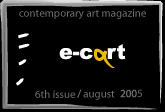 |
|
|
||||||||||||||
 |
 |
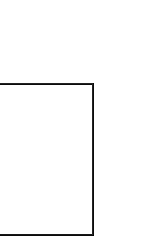 |
|
||||||||||||||
 |
|
 |
|
||||||||||||||
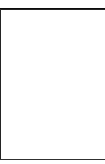 |
|
||||||||||||||||
 |
|
||||||||||||||||
| |
|
||||||||||||||||
| |
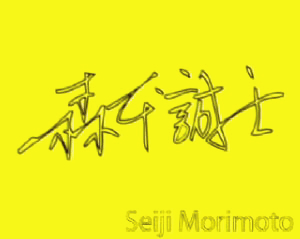 |
 |
|
||||||||||||||
 |
 |
|
|
||||||||||||||
| |
 |
|
 |
|
|
|
|
|
|||||||||
| |
|
||||||||||||||||
| |
|
||||||||||||||||
 |
|
||||||||||||||||
 |
|
||||||||||||||||
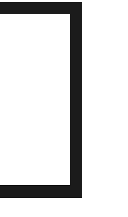 |
|
||||||||||||||||
 |
|
||||||||||||||||
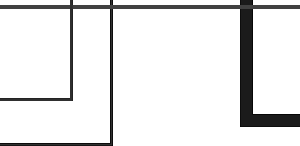 |
|
||||||||||||||||
| |
|
|
|
|
|
|
|
|
|
|
|
|
|
|
|
|
|
Statement - Seiji Morimoto
My works are me; what is received from them, it's my work. The works have each of them different levels, or better said direction, in which they can be interpreted, each viewer can take what he/she wants from them, according to his/her nature. That's why, if one way of receiving them becomes boring, I invite the viewer to find also something else, another direction, in the same work.
Seiji Morimoto's works are very simple. He avoids digital techniques and builds almost in entirety his instruments by himself: amplifiers, synthetizers, microfones, little engines. His works could be called performed/played installations, no matter if we talk of painting or his musical representations. Most of all it is a process: that through which his concept receives an expression. That's why this process can be practised through different media, which it subordinates. Sometimes the process is visible (in performance), other times it takes place in the backstage, and the result can be a monochrome painting, which covers the very process that gave birth to it.
In the installation "Magpie" (magnetic pie but also the bird called magpie), Seiji exhibited a magnetic tape, on which he recorded, with microphones, the sounds produced by the gallery visitors. When the tape was over, he recorded again over the existing sounds, without erasing the first stratum. Through the loudspeakers, the sound resulted after these superpositions was released at the same time at the exterior, constituting in fact the object of the exhibition. Juxtaposed levels of tones create a sound composition, which reminds the crowing of a bird (a magpie feather was measuring, tied to the loudspeaker, the sound's vibration). Seiji redid the experiment with sound blaturi and as a performance: he was singing one long tone, which he recorded and then releasing it amplified. Even if the note was the same, the smallest variations of his voice made the superpositions not to coincide perfectly, giving birth to a complex composition. These minuscule differences - aleatory interstices in a programmed mechanics - provoke Seiji's curiosity. In the same way he was playing with little lines colored in yellow. He painted these lines on 10 canvases, in rows which he almost superposes, until he gets 10 yellow canvases, almost monochrome.
In Japan I was working with a much more complicated technique; here, in Berlin, my situation is harder, I don't really have money, which provokes me to be more simple. In Tokyo I had exhibited a lot, I had already found a clear path, but after I arrived here in Berlin I had a harder time for 2 years, a kind of panic, I couldn't work anything. Then I returned to the childhood, to my beginnings with drawing, and that's how I started to paint. Comparing to my mechanical installations, my paintings are more personal, because I'm the one who controls, in the end, the action. Painting one after another equal lines is a thinking process; while I write the little lines automatiquely, I narrate, I think, without preocupying with composition, line, light, as in the classic painting.
In my first year in Berlin I was all the time alone in the room, I wasn't in a very good state of mind, but I was seeing all kind of interesting lights in the room, in the dark, before I was falling asleep: the light of the power-outlet, the reflection of a ray of light from outside. If I had been with other people, I might have not noticed them. So all I was doing was painting what I saw: darkness and a faint colored light. This painting was a preparation of the installation I did later: for example the installation ("Nocturne") which I showed this year at the Transmediale . In 2003 I did my first installation in Germany: at the Plusow castle, where I was invited for an exhibition. I reconnected then with the preocupations I had in Japan, and then I continued.
Very rarely daily dialogues, connected to immediate circumstances, caught in a cvasi-aleatory flux of communication, can become an expressive compact substance, that can appeal to a message expressed with constancy. Such an exteriorized attitude (of the speaker) transforms then in a statement about himself, continous, coherent and founded. In the most banal discussions with Seiji Morimoto, every fragment of the discourse consolidates, in the subtext or directly, through associations of ideas, a territory that you perceive as being central - his work. An asceticism of expression which characterizes him (verbally and plasticly), concentrates any personal interaction with him in a common analytical approach, requiring, of his works, or his artistic actions. In the same way, particles of time/happening, sound or image, which flow normally as un-noticed adjacents of other "actions" are programatically fixed, weighted through a lucid filter and trans-posed by Seiji in the aesthetic field/language, which preoccupies him. From this perspective (rather personal than theoretical) I explained to myself the mixture - constant in his works - of abstraction and ermetism with a natural way and a humour which receive, precisely, the charm of objects or of the daily, small tones. His paintings, installations, performances can be seen as the small wheels (the example/detail) of a unique concept in progress, which he follows: seriality, repetitivity are documenting a process in progress, and each element of a series condensates, in an exemplary way, its principle.
Dayfly (one day fly and also ephemerity) is the first work from a series of five installations with the same motif. I did this work at the invitation of a Japanese friend, Izumi, who organizes, once a month in her apartment, a one day exhibition with Japanese artists in Berlin. I decided to exhibit in the attic, where there was no electricity, so I found a solution with batteries, which I continued along the whole series. Then I tried to exhaust all the possibilities which the space could offer to me, the means (it could not be too expensive) and the 4 bottles. The bazait of a little fly's wings: through the gap between the jar and the cap there was coming the sound produced by the coincidence of water, moved by a little engine, and the air. Even if the principle is the same in the 4 bottles, the water produces different sounds. A one-day fly can barely be seen, and its sound is very subtle. Dayfly is the sound, and my installation (the exhibition only lasts for one day, and so do the batteries I use). In another work from this series, which I did still in the attic, I put an air tube in each bottle filled with water and a drop of soap. The air bubbles, lighted from behind with flash-lights, appeared and disappeared in each bottle differently, in another rhythm. I am interested in the incontrolable effect which is created. Everything happens by chance, it comes and goes as a river. The fact that we met, the fact that I am in Berlin, all that happens to me here. Almost nothing can be controlled, everything is pure chance. This is a beautiful thing.
To what extent do Seiji's works conceptually derive from the Fluxus movement and how are these influences accorded with the current context?
Without Fluxus my work would not have existed. I admire in Fluxus the young artists who have always tried to experiment, each in his/her own way, but all in the same spirit. Then the directions which they followed were very much different, but the ideas in the beginning mattered a lot, when they were talking and experimenting, meeting as friends. However, an action like the one initiated by Fluxus is not possible today, the situation is totally different. I have a great respect for John Cage. When I was a student I started to play his compositions, and it was then that I first wrote my first piece . From Cage I learned to listen to the ordinary sounds (tic-tac, birds, cars), sounds that can be found and not composed. From Cage I learned that one does not necessarily needs notes to make music. I played with Takehisa Kosugi twice, in concerts, works by John Cage. He helped me a lot in Japan, trying to give me a few opportunities. I consider myself only partially as a musician, for the rest I am painter, artist. I don't do just music, but in fact I am indifferent to how my work is called.
Marta Jecu
Note: video recording and editing - Yves Lechermeier.